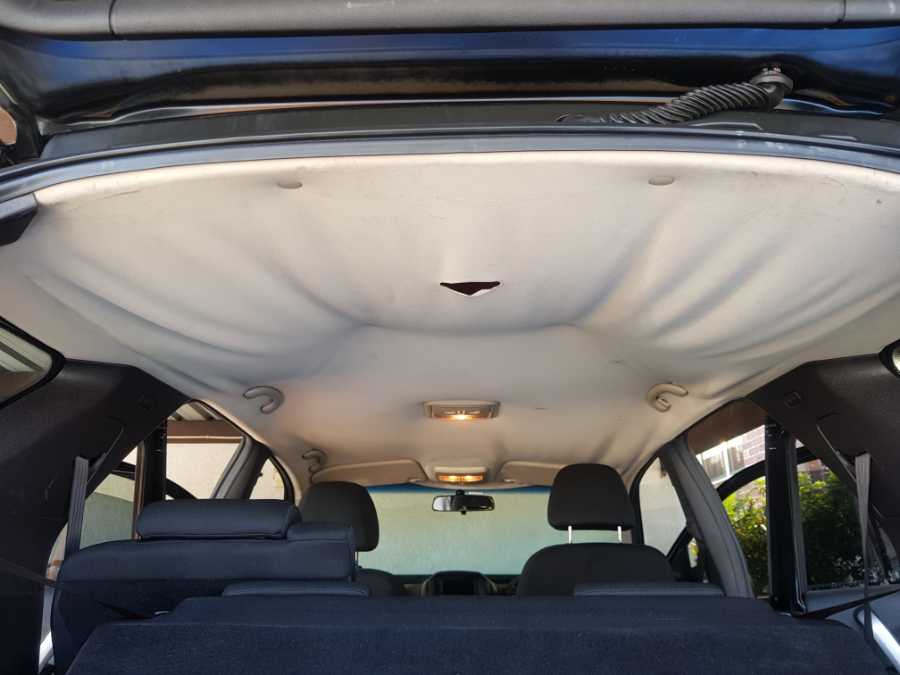✔ This article has been fact checked.
The radiator and cooling system are crucial components that help keep the engine running smoothly. Over time, dirt and debris can accumulate in the radiator, causing it to become clogged and less efficient.
A simple and effective way to remove these contaminants and improve the performance of the cooling system is by flushing out the radiator. One popular method to flush the radiator is with a vinegar (acetic acid) solution.
Flushing a car radiator with vinegar can be an affective way to remove rust and other debris from the cooling system. However, it is an acidic solution and may not be the best option due to its ability to cause damage to some components.
This article will explore the pros and cons of using vinegar to flush a radiator, how to do it, as well as other options for keeping the cooling system clean.
Table of Contents:

Signs That a Car Radiator Needs Flushing
There are several signs that a car radiator needs flushing. Some of the most common include the following.
-
Overheating: If the engine is running hot, it could be a sign that the radiator is clogged and not able to dissipate heat effectively.
-
Low Coolant Pressure: If the coolant pressure is low, it could indicate that the radiator is blocked and not able to circulate coolant properly.
-
Steam Coming From the Engine Bay: If steam is visible coming from the engine bay, it could be a sign that the radiator is clogged and not able to dissipate heat effectively.
-
Rust or Debris in the Coolant: If rust or debris is visible in the coolant, it could be a sign that the radiator is clogged and in need of flushing.
-
Unusual Smells or Noises: If there is an unusual smell or noise coming from the engine bay, it could be a sign that the radiator is in need of flushing.
It is important to note that many of these symptoms can also indicate other problems with the cooling system or engine, so it is best to have a professional diagnose the issue to determine if a radiator flush is necessary.
Regular maintenance, including flushing the car radiator, can help prevent these issues from occurring in the first place.

Is Vinegar a Good Radiator Flush?
Vinegar can be used to flush a radiator, but it is not the best choice for this purpose. The main problem with using vinegar is that it is highly acidic, with a pH of around 2.5.
-
This means that vinegar can be quite corrosive, which can damage the metal of the radiator and other components of the cooling system (such as any rubber parts).
-
Using pure vinegar can also cause metal to corrode (such as stainless steel), which can lead to leaks and other problems.
Baking soda or pre-mixed cooling system cleaner is a better option.
How Much Vinegar Do I Put In My Radiator to Clean It?
If you do decide to use white vinegar to flush your cars cooling system, it is important to use the right amount. The amount of cooling system cleaning solution will be different for every vehicle.
A 2:1 ratio of water to vinegar is recommended, as this will help to dilute the acidity of the vinegar and minimise the risk of damage to the radiator or engine cooling system.
For example; if you use 2 litres of water, you should use 1 litre of white vinegar.
Avoid flushing the radiator with vinegar for too long (over 10 minutes) to help reduce any potential for corrosion or damage.

Use a 2:1 ratio of water to vinegar when flushing a cooling system.
Will White Vinegar Clean a Radiator?
White vinegar is one of the most popular types of vinegar for cleaning radiators, as it is less expensive than other types and readily available. However, it is important to remember that it is a highly acidic substance and should be used with caution.
There are better methods and solutions for flushing a car radiator, such as using baking soda or a pre-mixed solution.
Is Vinegar and White Vinegar the Same?
No, vinegar and white vinegar are not the same. Vinegar is a general term for various types of vinegar, white vinegar is the type you would want to use when flushing a cooling system.
Vinegar is a generic term used to describe an acidic liquid that is made through the fermentation of any type of carbohydrate. It can come in many different forms, such as apple cider, balsamic, red wine, and more.
-
Each type of vinegar has its own unique flavor and aroma, as well as a different acidity level, which can range from 4% to around 7%.
-
White vinegar, also known as distilled vinegar or spirit vinegar, is specifically made through the distillation of diluted ethanol. This results in a clear and colorless solution characterised by its strong smell.
-
White vinegar is highly acidic, typically with an acidity level of around 10%.
Does White Vinegar Damage Metal?
White vinegar can be quite corrosive to metal and can cause damage if used in high concentrations. This is why it is important to dilute the vinegar with water before using it to flush a radiator.
Can You Flush a Heater Core With Vinegar?
It is not recommended to flush a heater core with vinegar, as the heater core is made of aluminium and vinegar can cause corrosion and damage.
However, when flushing the whole cooling system, it’s likely the the heater matrix will be flushed through with coolant or solution as well.
Conclusion
Flushing a radiator is an important part of maintaining a car’s cooling system. While white vinegar can be used to flush a radiator, it is not the best choice due to its high acidity. Instead, it is recommended to use a pre-mixed cooling system cleaning solution or baking soda.
If you do decide to use vinegar, be sure to dilute it with water and use the correct amount. Using the wrong mixture or too much vinegar can cause damage to the radiator and cooling system.
Remember to consider the materials of the cooling system and the pH level of the solution before you flush it through.
#Flushing #Radiator #Vinegar










